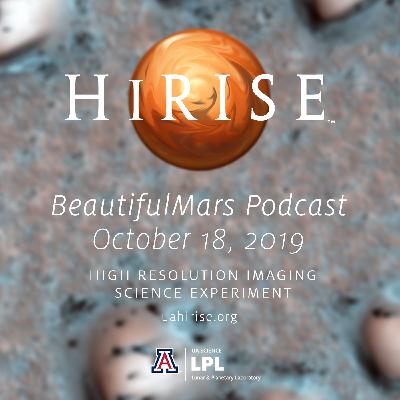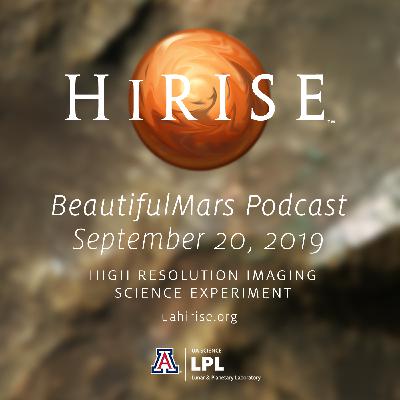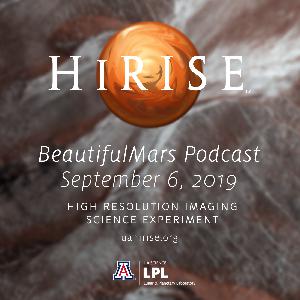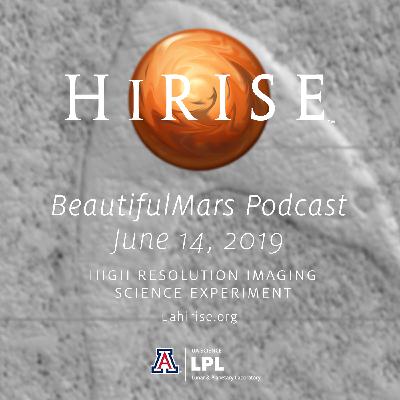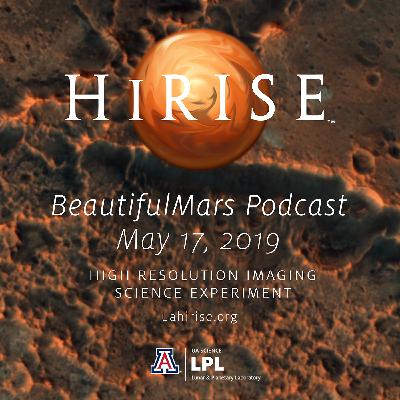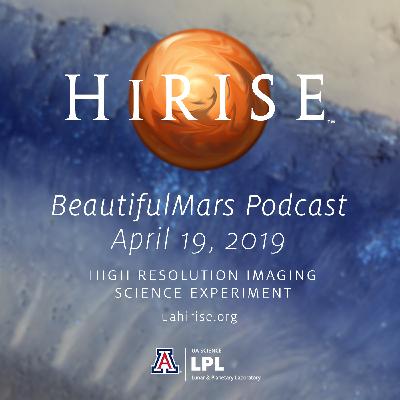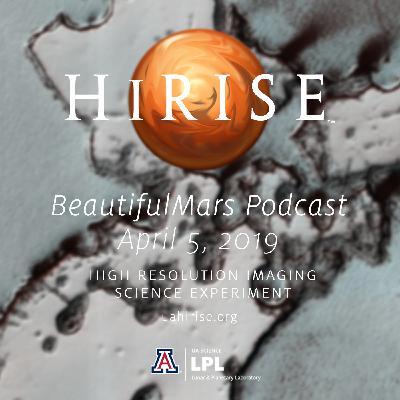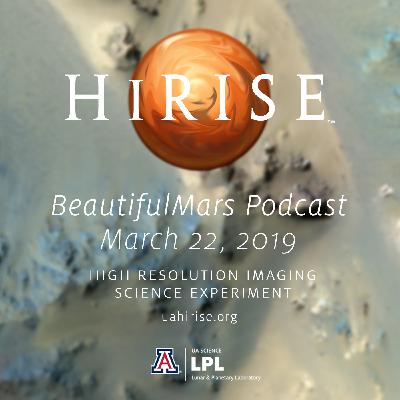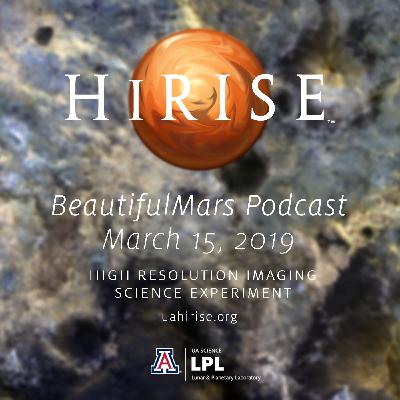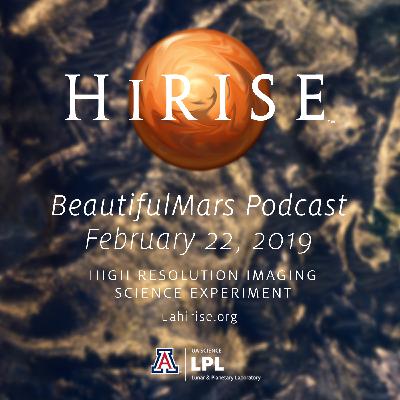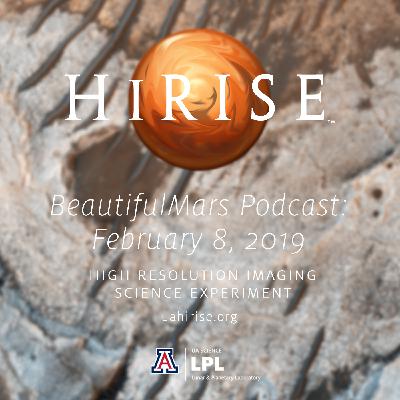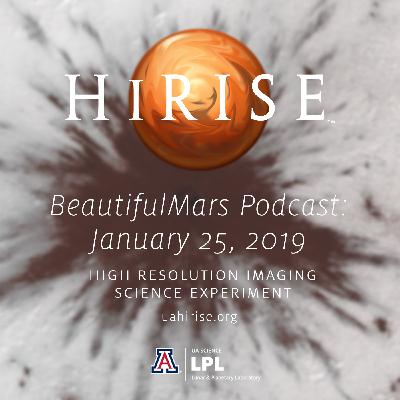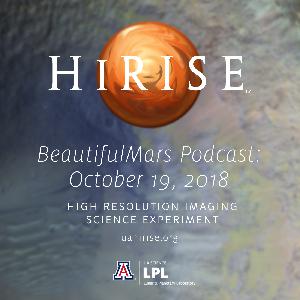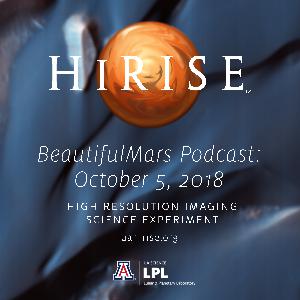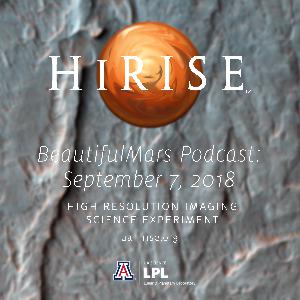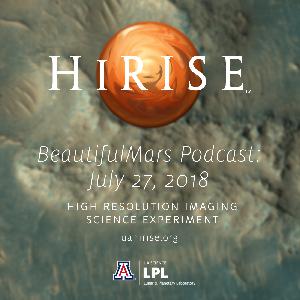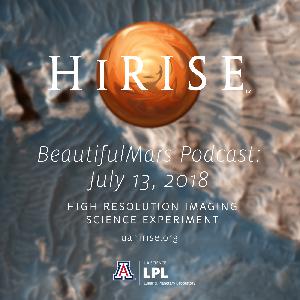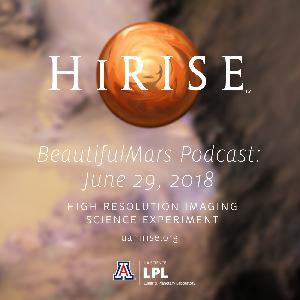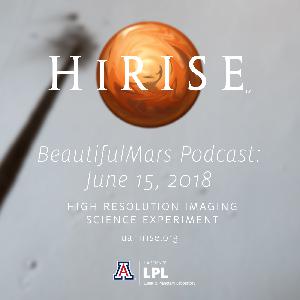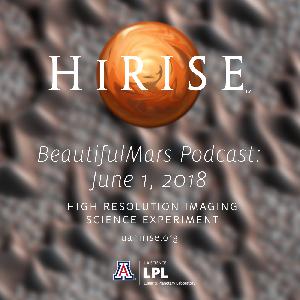Discover HiRISE: The BeautifulMars Podcast (Video)
HiRISE: The BeautifulMars Podcast (Video)

HiRISE: The BeautifulMars Podcast (Video)
Author: HiRISE/UArizona
Subscribed: 15Played: 287Subscribe
Share
© 2022 Arizona Board of Regents
Description
Learning about the Red Planet with captioned images from HiRISE, the most powerful camera ever sent to another planet, on board the Mars Reconnaissance Orbiter (MRO/NASA).
96 Episodes
Reverse
A collection of dunes on Mars might look artificial or like pieces on a game board, but in fact, they are quite natural formations. (Narration: Tre Gibbs)
The most habitable places on Mars now and in the past are underground, where water is or was much more stable than at the surface. (Narration: Tre Gibbs)
When spring comes to Mars, the sunlight will work on icy layers and things start to fall. (Narration: Tre Gibbs)
An interesting natural formation on the Red Planet might look to us like a very famous logo. (Narration: Tre Gibbs)
Sometimes when it comes to lava, resistance is *not* futile. Plus, we see some beautiful frost-covered dunes. (Narration: Tre Gibbs)
The surface of Mars is often so beautiful that it looks like abstract art. (Narration: Tre Gibbs)
The South Pole of Mars often features some very dramatic changes that we can track over the years. (Narration: Tre Gibbs)
The complexity of gully formation and the stories we can find in layers of bedrock. (Narration: Tre Gibbs)
It's one of the most mysterious features on Mars, known as "brain terrain." (Narration: Tre Gibbs)
Dust devils are common on Mars, but they dare not cross the southern polar layered deposits. (Narration: Tre Gibbs)
Geological layers can tell us a great deal about the ancient past of a planet's surface. Explore more with four new captioned images from HiRISE. (Narration: Tre Gibbs)
A new impact crater helps start out our first podcast for 2019. (Narration: Tre Gibbs)
A bright, rectangular mesa stands tall in Amazonis Planitia. (Audio: Tre Gibbs)
An enhanced color image brings out Mars’ inner Roy Orbison. (Audio: Tre Gibbs)
Hanging dunes are a real thing on Mars, and not hard to count. (Audio: Tre Gibbs)
Dust avalanches create slope streaks that expose darker materials usually hidden below a layer of light-toned dust. (Audio: Tre Gibbs)
Spiders, clays and figure 8 craters on the Red Planet. (Audio: Tre Gibbs)
Why yes, there are avalanches that happen on the Red Planet. (Audio: Tre Gibbs)
A small impact can leave a long streak. Plus, could the Martian underground be habitable in the future? (Audio: Tre Gibbs)
Patches of snow hide from a relentless sun, and Hale Crater shows off some colorful bedrock. (Audio: Tre Gibbs)


